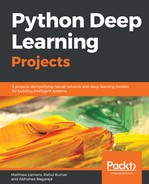Now that we have our model architecture defined, let's train our model. We begin with a TensorFlow graph initialization and execute the training steps.
tf.reset_default_graph()
sess = tf.InteractiveSession()
model = Model(size_layer,num_layers,embedded_size,vocabulary_size+4,dimension_output,learning_rate)
sess.run(tf.global_variables_initializer())
EARLY_STOPPING, CURRENT_CHECKPOINT, CURRENT_ACC, EPOCH = 5, 0, 0, 0
while True:
lasttime = time.time()
if CURRENT_CHECKPOINT == EARLY_STOPPING:
print('break epoch:%d '%(EPOCH))
break
train_acc, train_loss, test_acc, test_loss = 0, 0, 0, 0
for i in range(0, (len(train_X) // batch_size) * batch_size, batch_size):
batch_x = str_idx(train_X[i:i+batch_size],dictionary,maxlen)
acc, loss, _ = sess.run([model.accuracy, model.cost, model.optimizer],
feed_dict = {model.X : batch_x, model.Y : train_onehot[i:i+batch_size]})
train_loss += loss
train_acc += acc
for i in range(0, (len(test_X) // batch_size) * batch_size, batch_size):
batch_x = str_idx(test_X[i:i+batch_size],dictionary,maxlen)
acc, loss = sess.run([model.accuracy, model.cost],
feed_dict = {model.X : batch_x, model.Y : train_onehot[i:i+batch_size]})
test_loss += loss
test_acc += acc
train_loss /= (len(train_X) // batch_size)
train_acc /= (len(train_X) // batch_size)
test_loss /= (len(test_X) // batch_size)
test_acc /= (len(test_X) // batch_size)
if test_acc > CURRENT_ACC:
print('epoch: %d, pass acc: %f, current acc: %f'%(EPOCH,CURRENT_ACC, test_acc))
CURRENT_ACC = test_acc
CURRENT_CHECKPOINT = 0
else:
CURRENT_CHECKPOINT += 1
print('time taken:', time.time()-lasttime)
print('epoch: %d, training loss: %f, training acc: %f, valid loss: %f, valid acc: %f '%(EPOCH,train_loss, train_acc,test_loss,test_acc))
EPOCH += 1
While the RNN model is getting trained, we can see the logs of each epoch as shown below :
OUTPUT:

